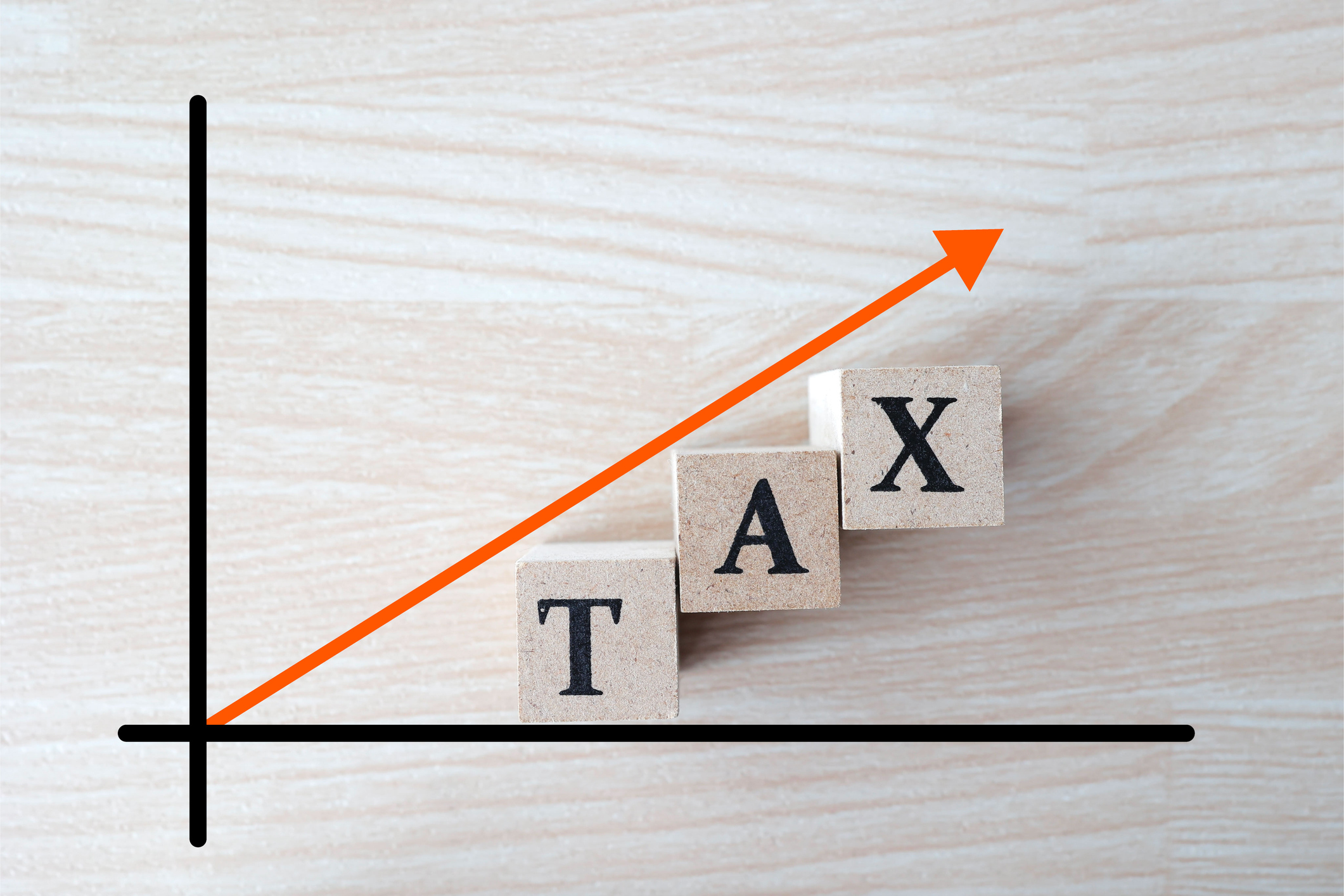To Help Avoid a Tax Surprise, Diversify Your Retirement Accounts
Putting all your eggs into baskets of 401(k)s and IRAs could cost you down the road.


When I hold informational events and insurance sales presentations, I like to ask the guests for one or two concerns, questions or issues they might have about retirement.
Their answers usually touch on the same handful of topics:
- Health care costs.
- Long-term care costs.
- And of course, the most common concern: running out of money.
Every once in a while, though, someone asks about taxes.

Sign up for Kiplinger’s Free E-Newsletters
Profit and prosper with the best of expert advice on investing, taxes, retirement, personal finance and more - straight to your e-mail.
Profit and prosper with the best of expert advice - straight to your e-mail.
It’s a legitimate concern. With the national debt nearing $20 trillion, we must find a way to pay for it someday — and the most obvious solutions could include a tax hike. When I ask how many of the seminar participants believe taxes will go up, EVERYONE’s hand goes up.
Until recently, that is. For the first time ever, one person said, “Trump says he’s going to reduce taxes.”
Now, I’m not sure when or if President Trump’s tax plan will affect the common person. While I am no expert on the proposal he has set forth, it appears to have the biggest benefit to business, much more than the common individual. But even if taxes do fall, there are actions to take: Don’t postpone taxes by putting your money in tax-deferred 401(k)s, etc., pay the tax now! It’s just one more incentive to make some moves now to help protect yourself from higher taxes in the future.
How high can taxes go? In 1944, the top rate peaked at 94% on taxable income over $200,000, (which would be $2.8 million today) and over the next three decades — the ’50s, ’60s and ’70s — the top federal income tax rate remained high. In fact, it didn’t drop below 70% percent until 1981.
In comparison, today’s top rate of 39.6% seems low.
And yet, many savers build their nest eggs with tax-deferred plans, such as 401(k) accounts, traditional IRAs or SEP IRAs. They’re sold on the idea that they don’t have to pay taxes on the front end, but sometimes they forget they’ll be taxed when they take the money out later. That could result in a nasty surprise down the road — especially if tax rates eventually do rise.
Even now, we see retirees who have the bulk of their retirement savings in tax-deferred accounts, leaving themselves with little flexibility if they need to withdraw money to pay a big bill — and in a real predicament if they manage to put off taking out money until required minimum distributions kick in at age 70½.
Either way, when you blend that tax-deferred money with taxable income streams, it can bump up your tax bracket before you know it. And suddenly, your Social Security check, which wasn’t taxed at all when your combined income was less than $32,000 (married filing jointly), can take a tax hit.
If you and your spouse have a combined income of $32,000 to $44,000, you may have to pay income tax on up to 50% of your benefits. If your combined income is more than $44,000, up to 85% of your benefits may be taxable!
What can a saver do? Think about moving some of your money from tax-deferred to tax-free accounts.
I recommend always taking the match on your company’s 401(k), but after that, explore a tax-advantaged option, if it’s offered by your employer — a Roth 401(k) or a Roth IRA, if that’s a fit. The money goes in after taxes have been paid, but those contributions and any earnings come out tax-free in retirement.
You should also talk to your financial professional about other options, such as permanent life insurance. This option removes the income thresholds that Roth options impose and is a great way to grow money tax-free.
Diversifying your assets by tax treatment can give you more flexibility to manage your taxable income in retirement, and you won't have to worry as much about future income tax rates.
There may be some pain now, but you won’t pay as much for the gain later. It may help you leverage Social Security, and it very well may help your retirement dollars stretch further.
Kim Franke-Foisted contributed to this article.
Zach Gray is an Investment Adviser Representative and partner at Wall Street Financial Group. He holds Series 6, 63 and 65 securities registrations as well as property/casualty and life/health insurance licenses in Illinois, Indiana and Missouri. He recently earned his Chartered Retirement Planning Counselor designation from the College of Financial Planning.
Investment advisory services offered through AE Wealth Management, LLC.
Neither the firm nor its agents or representatives may give tax or legal advice. Individuals should consult with a qualified professional for guidance before making any purchasing decisions.
Disclaimer
Investment advisory services offered only by duly registered individuals through AE Wealth Management, LLC (AEWM). Rooted Wealth Retirement and AEWM are not affiliated companies.
Get Kiplinger Today newsletter — free
Profit and prosper with the best of Kiplinger's advice on investing, taxes, retirement, personal finance and much more. Delivered daily. Enter your email in the box and click Sign Me Up.

Zach Gray is an Investment Adviser Representative and founder of Rooted Wealth Advisors. He holds Series 6, 63 and 65 securities registrations as well as property/casualty and life/health insurance licenses in Illinois, Indiana and Missouri. He recently earned his Chartered Retirement Planning Counselor designation from the College of Financial Planning.
-
 Which Generation Pays the Most Taxes in the US?
Which Generation Pays the Most Taxes in the US?Tax Burden Polls show that most people feel like taxes are unfair. But which age group bears the brunt of the tax burden in the United States?
By Kelley R. Taylor
-
 How Much Will Car Prices Go Up With Tariffs?
How Much Will Car Prices Go Up With Tariffs?Tariffs could drive car prices up even higher, for new and used cars, as well as for American brands.
By Jim Patterson
-
 A QLAC Does So Much More Than Simply Defer Taxes
A QLAC Does So Much More Than Simply Defer TaxesHere are the multiple ways you can use a QLAC, from managing retirement risks to creating income for specific retirement needs and wants.
By Jerry Golden, Investment Adviser Representative
-
 Self-Directed Brokerage Accounts: Retirement's Hidden Gem?
Self-Directed Brokerage Accounts: Retirement's Hidden Gem?SDBAs are often overlooked, but they can offer more flexibility and growth potential inside your 401(k) when actively managed by a professional.
By Scott M. Dougan, RFC, Investment Adviser
-
 Early-Stage Startup Deals: How Does a SAFE Work?
Early-Stage Startup Deals: How Does a SAFE Work?Investing in an early-stage startup can get complicated fast, so the venture capital industry turns to other investing options. One is a SAFE.
By Murat Abdrakhmanov
-
 Should You Hire a Public Adjuster for Your Insurance Claim?
Should You Hire a Public Adjuster for Your Insurance Claim?As natural disasters strike more often, insurance clients are asking, 'What should I do, or who should I hire, if my insurance company is jerking me around?'
By H. Dennis Beaver, Esq.
-
 Tips to Help Entrepreneurs Create Self-Sustaining Businesses
Tips to Help Entrepreneurs Create Self-Sustaining BusinessesWith the right processes and people in place, a truly sustainable business can be efficiently passed on to a successor and run profitably on its own.
By Jason L Smith, CEP®, BPC
-
 Navigating Annuity Taxation: A Guide for Financial Advisers
Navigating Annuity Taxation: A Guide for Financial AdvisersUnderstanding the essentials of taxation in retirement income strategies involving annuities helps ensure positive outcomes for clients.
By Jake Klima
-
 How Google Reviews Can Help (or Hurt) Financial Advisers
How Google Reviews Can Help (or Hurt) Financial AdvisersDon't leave your Google Business Profile unclaimed — someone else can make changes if they claim it. Also, here's what you can (and cannot) do with the reviews.
By Jeff Briskin
-
 How Baby Boomers and Gen Xers Are Redefining Retirement Living
How Baby Boomers and Gen Xers Are Redefining Retirement LivingBoth generations need to embrace change and leverage real estate as a dynamic asset in their retirement planning. Here's how financial advisers can help, too.
By David Conti, CPRC